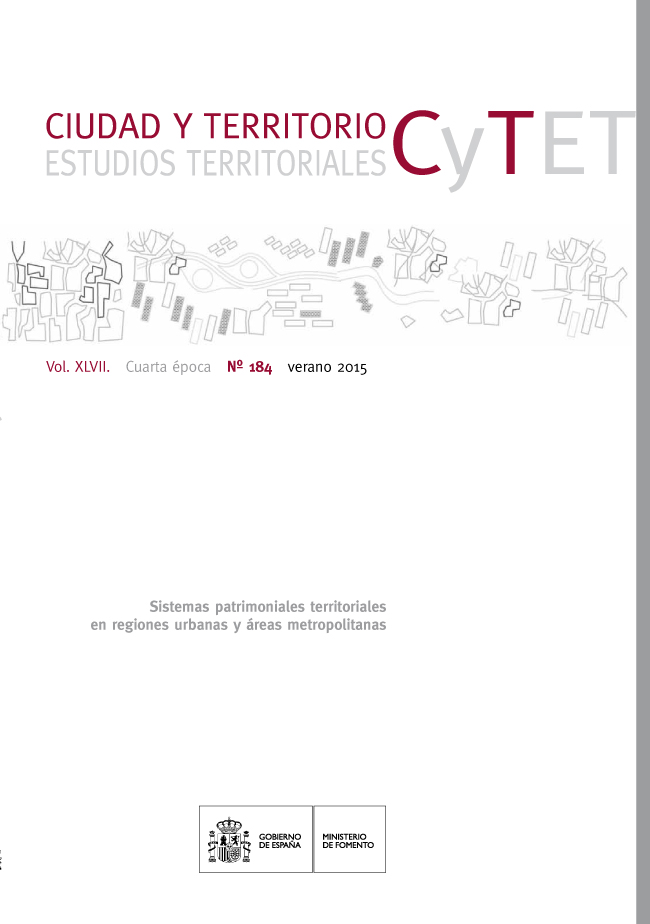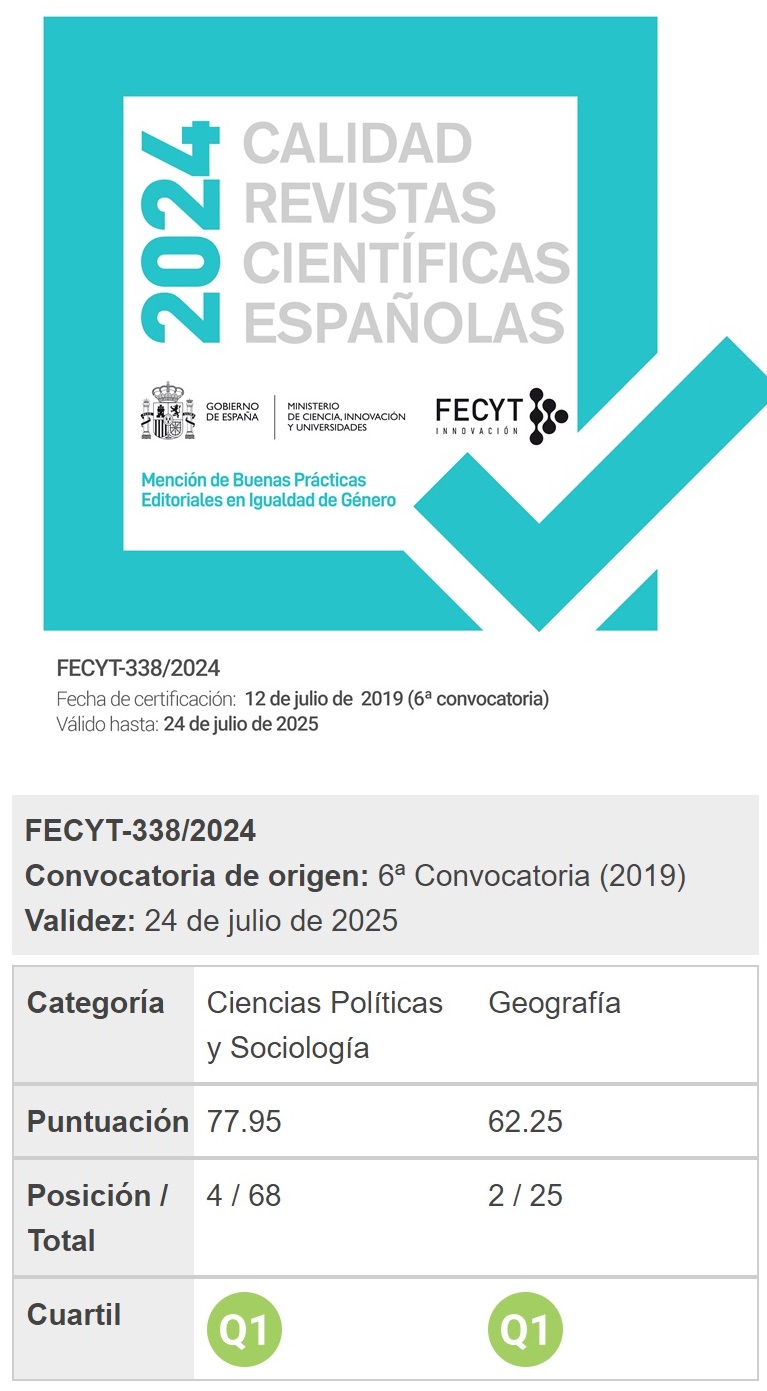La transformación del sistema urbano y el papel de los municipios con conjunto histórico: el caso de la región urbana madrileña
Palabras clave:
Patrimonio, conjunto histórico, sistema urbano, región urbana, policentrismo, MadridResumen
Tradicionalmente el análisis e intervención efectuada sobre las ciudades
históricas, los centros históricos y los conjuntos históricos se ha basado en un “enfoque
desde dentro”, tratándose como piezas aisladas y desvinculadas de la dinámica
de la ciudad y sobre todo del sistema urbano.
La transformación de los sistemas urbanos a lo largo del tiempo está influenciada por
cambios políticos, económicos, sociales, culturales, demográficos y tecnológicos. En
este artículo se utiliza la componente demográfica para examinar los cambios en la
configuración territorial y cómo se redefine el rol de los municipios con conjunto histórico
en el sistema urbano de la región urbana madrileña.
En base a la evolución demográfica desde mediados del siglo XIX hasta 2012, se estudian
los cambios en la distribución espacial de la población, en el tamaño de los
municipios y en la posición que ocupan en el ranking del sistema urbano. Ello permite
aproximarnos al papel que tienen los municipios con conjunto histórico en el sistema
urbano. Además en el artículo se avanza una tipología de municipios con conjunto
histórico de acuerdo a su centralidad tradicional, centralidad político-administrativa
actual, grado de influencia metropolitana y crecimiento demográfico en los últimos
treinta años.
Descargas
Descargas
Publicado
Cómo citar
Número
Sección
Licencia
Derechos de autor 2015 Eloy Solis Trapero, Borja Ruiz-Apilánez Corrochano, María I. Mohino Sanz, José María De Ureña Francés

Esta obra está bajo una licencia internacional Creative Commons Atribución-NoComercial-SinDerivadas 4.0.
Sin perjuicio de lo dispuesto en la legislación vigente sobre Propiedad Intelectual, y conforme a la misma, el/la los/las autor/a/es/as que publiquen en CyTET cede/n a título gratuito, de modo no exclusivo y sin límite temporal al Ministerio de Transportes, Movilidad y Agenda Urbana los derechos para difundir, reproducir, comunicar y distribuir en cualquier formato actual o futuro, en papel o electrónico, la versión original o derivada de su obra bajo licencia de Creative Commons Reconocimiento-NoComercial-SinObraDerivada 4.0 Internacional (CC BY-NC-ND 4.0), así como para incluir o ceder a terceros la inclusión de su contenido en índices, repositorios y bases de datos nacionales e internacionales, con referencia y reconocimiento en todo caso de la autoría del mismo.
Además, al realizar el envío, el/la los/las autor/a/es/as declara/n que se trata de un trabajo original en el que se reconocen las fuentes que han sido utilizadas en su estudio, comprometiéndose a respetar la evidencia científica y a no modificar los datos originales para verificar o refutar una hipótesis de partida; que el contenido esencial del mismo no ha sido publicado previamente ni se publicará en ninguna otra obra o revista mientras esté en proceso de evaluación en la revista CyTET; y que no se ha remitido simultáneamente a otra publicación.
Los autores deben firmar un Formulario de Cesión de Derechos, que les será enviado desde la Secretaría de CyTET una vez se acepte su artículo para ser publicado.
Con el objetivo de favorecer la difusión del conocimiento, CyTET se adhiere al movimiento de revistas de Open Access (OA) y entrega la totalidad de sus contenidos a diversos índices, repositorios y bases de datos nacionales e internacionales bajo este protocolo; por tanto, la remisión de un trabajo para ser publicado en la revista presupone la aceptación explícita por parte del autor/a de este método de distribución.
Se anima a las/os autoras/es a reproducir y alojar sus trabajos publicados en CyTET en repositorios institucionales, páginas web, etc. con la intención de contribuir a la mejora de la transferencia del conocimiento y de la citación de dichos trabajos.








 Enlace a CyTET en Linkedin
Enlace a CyTET en Linkedin